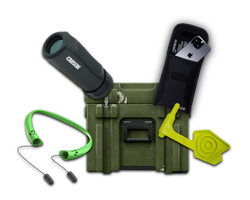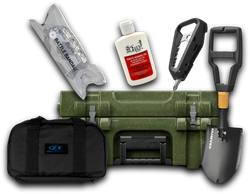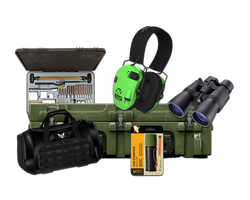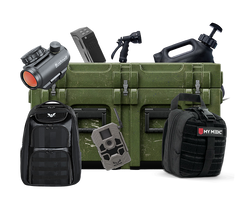How to Tie a Sleeping Bag to Your Backpack: The Ultimate Guide for Adventurers
Table of Contents
- Introduction
- Preparing Your Backpack and Sleeping Bag for Attachment
- Methods for Attaching a Sleeping Bag to Your Backpack
- Where to Attach Your Sleeping Bag: Strategic Positioning
- What NOT to Do When Attaching Your Sleeping Bag
- Essential Safety Tips and Precautions
- Conclusion
- Frequently Asked Questions (FAQs)
Introduction
Have you ever found yourself in the middle of a hike, struggling to secure your sleeping bag to your backpack? You're not alone! Many outdoor enthusiasts have faced the same frustrating challenge, leading to imbalanced loads and potential gear loss. Picture this: you're trekking through the wilderness, and suddenly, your sleeping bag swings wildly, throwing you off balance. Not only is it annoying, but it can also lead to accidents.
Understanding how to properly attach a sleeping bag to your backpack is crucial for any camping or hiking trip. With the right techniques, you can ensure that your gear remains secure and your hike is comfortable. In this comprehensive guide, we will explore various methods on how to tie a sleeping bag to a backpack effectively. Whether you're a seasoned outdoor veteran or a beginner gearing up for your first adventure, the insights you gain here will enhance your outdoor experience.
By the end of this post, you'll learn about the types of backpacks suitable for sleeping bag attachment, the best methods for securing your bag, strategic positioning for balance, common pitfalls to avoid, and essential safety tips. So, let's gear up and dive into the details of this crucial skill for any adventurer!
Preparing Your Backpack and Sleeping Bag for Attachment
Before you start strapping your sleeping bag to your backpack, it’s essential to assess both your gear and how best to prepare them for attachment.
Assessing Your Backpack's Compatibility
Not all backpacks are designed the same when it comes to carrying additional gear like sleeping bags. Here’s what to consider:
-
Types of Backpacks:
- Hiking Backpacks: These often come equipped with built-in loops and straps specifically designed for securing extra gear.
- Travel Backpacks: While they may lack specialized loops, they often have ample space and compartments for gear.
- Hybrid Backpacks: These are versatile and can be used for both hiking and urban settings, often needing additional attachments like carabiners or bungee cords.
-
Points of Attachment:
- Familiarize yourself with the loops, straps, or external frames on your backpack. Look for secure points where you can easily attach your sleeping bag without compromising its stability.
Preparing Your Sleeping Bag for Attachment
Now that your backpack is ready, it’s time to prepare your sleeping bag:
-
Compression Sacks: Utilizing a compression sack is one of the most effective ways to minimize the size of your sleeping bag. This makes it much easier to attach to your backpack.
-
Folding vs. Rolling:
- Folding: This method is effective for square or rectangular sleeping bags. Fold it to match the backpack's width for easier attachment.
- Rolling: Ideal for mummy-shaped bags, rolling tightly from the foot end helps expel trapped air and minimizes bulk.
Understanding the impact of these methods on thermal and technical capacities can help you choose the best approach for your specific needs.
Methods for Attaching a Sleeping Bag to Your Backpack
With both your sleeping bag and backpack prepped, it’s time to dive into the various methods of attachment. Here are some effective strategies to ensure your sleeping bag stays secure.
Utilizing Built-in Straps
Most hiking backpacks come with built-in straps specifically designed for securing gear. Here’s how to use them effectively:
- Lay It Out: Position your backpack on a flat surface with all straps unbuckled.
- Position Your Sleeping Bag: Place your compressed sleeping bag across the loops at the bottom of the backpack.
- Thread Through: Take the bottom straps and thread them through the loops of your sleeping bag or its compression sack.
- Buckle Up: Securely fasten the straps, ensuring they're snug but not overly tight.
Using Additional Gear
If your backpack lacks built-in straps or if you want to attach multiple pieces of gear, consider these alternatives:
-
Carabiners: These handy clips can help secure your sleeping bag by simply looping them through your backpack's frame or available straps.
-
Paracord: This versatile cord can be tied around your sleeping bag and attached to the backpack’s loops. Just ensure you know how to untie it easily.
-
Bungee Cords: These are great for quick attachments but be cautious as they can be less secure if not fastened properly.
Pros and Cons of Different Attachment Methods
When it comes to securing your sleeping bag, each method has its advantages and disadvantages:
- Security vs. Accessibility: Built-in straps are typically more secure, while carabiners offer greater accessibility.
- Weight Distribution: Attaching your sleeping bag in various locations can impact balance and comfort.
Always aim for a balance that feels right for your specific hike.
Where to Attach Your Sleeping Bag: Strategic Positioning
The position of your sleeping bag on the backpack can significantly impact your comfort and balance. Here are some common placement strategies:
Inside the Backpack
If you have a larger capacity backpack, storing your sleeping bag inside is often the best option:
- Benefits: Keeps your sleeping bag dry and protects it from the elements.
- Drawbacks: Can take up valuable space for food and other gear.
Bottom of the Backpack
Attaching your sleeping bag to the bottom is a classic method that offers several advantages:
- When to Use It: Ideal for well-trodden paths or shorter trips, allowing easy access to other essentials.
- Impact on Center of Gravity: Ensure that the bag is snug to prevent dragging and to maintain balance.
Sides or Front of the Backpack
For more challenging terrains or situations requiring frequent access, consider these placements:
- Situations for Side Attachment: Perfect for navigating rocky trails or when you need quick access to your sleeping bag.
- Maintaining Balance: Always balance the weight on the other side to avoid tipping over.
What NOT to Do When Attaching Your Sleeping Bag
Even seasoned adventurers can fall prey to common mistakes when attaching their sleeping bags. Here’s what to avoid:
Common Mistakes and Their Consequences
-
Over-tightening Straps: Excessive tightening can damage both your sleeping bag and straps, making removal a hassle.
-
Poorly Distributed Weight: An imbalanced load can lead to discomfort and potential injury.
-
Ignoring Balance and Center of Gravity: A bag swinging too low or skewed can disrupt your hike and increase the risk of falls.
How to Avoid These Mistakes
-
Regular Checks: Periodically inspect the attachment points to ensure everything is secure.
-
Using the Right Gear: Invest in quality gear that can handle the demands of outdoor adventures.
Essential Safety Tips and Precautions
Your safety is paramount when hiking, and ensuring your gear is secure contributes to that. Here are some vital safety tips to follow:
Securing Your Gear: The Checklist
-
Pre-trip Checks: Double-check all straps and attachments before hitting the trail.
-
Mid-trip Adjustments: Make time for quick inspections during breaks.
-
Emergency Fixes: Carry a small repair kit with duct tape, zip ties, and other essentials for quick fixes.
Safety Implications of a Poorly Attached Sleeping Bag
A poorly attached sleeping bag can lead to significant risks, including:
- Tripping Hazards: A swinging bag can throw off balance and cause falls.
- Loss of Gear: The risk of losing your sleeping bag increases if it’s not securely attached.
Conclusion
Congratulations! You now possess a comprehensive understanding of how to tie a sleeping bag to your backpack effectively. By preparing both your sleeping bag and backpack, utilizing the right attachment methods, and positioning your gear strategically, you can enhance your outdoor experience.
Remember, knowledge is key to enjoying your adventures safely and comfortably. As you prepare for your next hike, keep these insights in mind, and share this knowledge with fellow adventurers. With the right preparation and techniques, you can focus on enjoying the beauty of nature rather than wrestling with your gear.
As you gear up for your next adventure, consider exploring Crate Club's subscription services for high-quality tactical gear and survival tools. Check out the Crate Club Subscription Services to find the perfect tier for your needs.
Don't forget to explore the Crate Club Shop for additional gear and tools that can enhance your outdoor experience. Happy hiking, and may your adventures be safe and memorable!
Frequently Asked Questions (FAQs)
Can I attach a sleeping bag to any backpack?
Not all backpacks are designed to hold a sleeping bag securely. Hiking or camping backpacks usually come with dedicated loops or straps for this purpose.
What can I use if my backpack doesn't have built-in sleeping bag straps?
If your backpack lacks built-in straps, you can use alternatives like carabiners or paracord to secure the sleeping bag.
How tight should the straps be when attaching my sleeping bag?
Straps should be snug enough to hold your sleeping bag securely in place without distorting it or putting undue stress on the straps.
How often should I check the attachment?
It's good practice to check your attachments periodically, especially during challenging hikes.
What should I include in a repair kit for emergency fixes?
A well-rounded repair kit should include duct tape, zip ties, mini-locks for zippers, and a needle and thread for fabric repairs.
Is it safe to attach a sleeping bag to the side of my backpack?
While attaching it to the side is possible, it's generally better to attach it to the bottom for optimal weight distribution.
Can I attach multiple items to my backpack along with a sleeping bag?
Yes, but be cautious about the total weight and how it’s distributed to avoid imbalance during your hike.
Share this article



